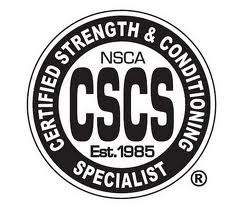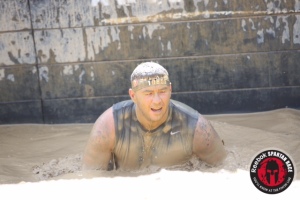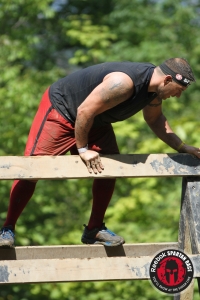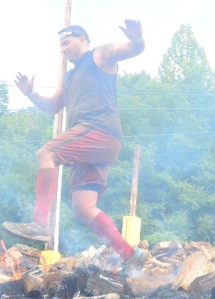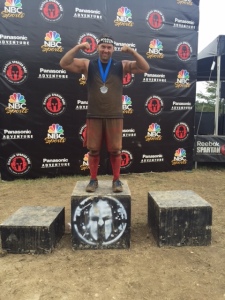What a Private Sector Strength Coach Learned His First Year Training High School Football
Fall 2016 was my first year as a high school strength coach for Pope John High School in northern New Jersey. I have worked in the private sector for my entire career as a strength coach, but I learned there are huge differences between doing the same job in each world.
Like anyone entering a new position, there is a learning curve and I already have ideas for how I am going to do things differently next year based on my first year’s experience.
- Coaching a Team In-season Requires More Perspective
Coming from the private sector I mostly saw athletes in the off-season which meant my main focus was making improvement and gains in the athletes. My number one question that I would ask myself would be, “Did my athletes get stronger, faster, and will it carry over to a better season?”
Being with a team for an entire season is a totally different animal. In a sport like football the athletes take such a beating. I found myself constantly adjusting workouts to the individual athlete or having to switch on the fly because the athletes basically told me I literally can’t do that today. As a coach there is a fine line between knowing what is best and just being stubborn. At times I might have been a little bit stubborn and asked them to do things that they were not capable of. However, as the season went on I now realize that I need to listen to the athletes more about their level of fatigue. I find myself playing physical therapist quite a bit even though that is not my role. Luckily I also work in an incredible facility that hosts some great PT’s that I have learned a lot from. Precision Sports Performance in East Hanover is partnered with Provere physical therapy.
This year we took a handful of our athletes to the Precision facility the day after games for a recovery workout and treatment. The athletes who attended have raved about how much better they feel after a recovery session. This is quite a contrast to how I train athletes in their offseason when strength and speed improvements is the number one agenda.
- Modifying My Program as the Season Wears On
After the first few games I pushed them quite a bit. Now that we are down to the last few games and approaching playoff time it is mostly about keeping them healthy. We do a lot of mobility, some light running, lots of stretching and foam rolling, and light body weight work at low volume.
To be completely honest, I am really looking forward to being able to work with the team this off-season and to really dig in and start from scratch. Being a coach is always about learning and adapting. If you stop learning and are stuck in your ways the game will pass you by. Before I can get to the off-season we have a state championship to win!
- Adjusting My Coaching Style to the Team Setting
There is a big difference between working with 5 athletes at a time and 30 at a time. You have to really command attention and get your point across quickly. I learned that I can’t spend too much time talking because there will always be a few who lose focus. Instead I make a few key teaching points and then walk around and help individuals. Another big difference between the private sector and working with a team is that on a team you have a lot of different personalities. Some are workers and you need to talk to them about rest and recovery. Others need a kick in the butt to push him or her harder. I found that I don’t have a lot of time for individual coaching so I quickly need to find the pulse of the team and act accordingly.
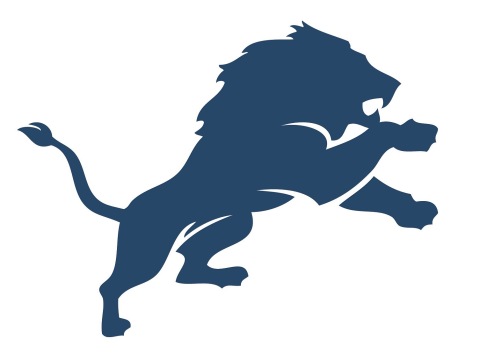
“I can’t work out today. I have a game.”
I hear this all the time from my athletes. I can’t workout today because I have a game. Here are four reasons why this argument does not hold any weight.
1: Off-Season vs. In-Season
If you worked out all off-season like you should have then your in-season workouts should not be a problem. The Off-Season is the time to make gains. In-Season workouts are designed to maintain what you have gained from your off-season. By using high Intensity but low volume you can maintain your off-season work. Most players atrophy during a long season so being able to maintain muscle mass is critical for an athlete.
2: I’ll be sore or tired
Going back to high intensity and low volume you should not be sore from this type of workout. If you are sore after every workout you are doing something wrong. A good strength and conditioning coach will know how to program in-season workouts accordingly. As for being tired, several athletes have a routine of working out on game day. Perhaps the most famous was Michael Jordan who always lifted on game days when he was playing for the bulls. In fact you should feel better after a workout. When you get up and get your body moving it primes the central nervous system for activity which gives you energy. Have you ever slept in really late and you feel even more tired throughout the day? The reason for this is because you are being lethargic. Workouts give you energy not take away from it as long as they are programmed accordingly.
3: What games are important?
I often have athletes tell me that they can’t workout out of season because they have a club team game. In today’s culture where athletes often play year round they have a hard time distinguishing between what games are important and what not. They can’t see the big picture. You can’t spend all of your time playing without training. That is the best way to get an overuse injury. Scrimmages during pre-season are another example. As a coach I am trying to get my athletes to peak. The question becomes when do we want them to peak? During the pre-season or when the games really matter.
4: Training to offset overuse injuries
Overuse injuries are at an all time high amongst young athletes. A good training program doesn’t just train the muscles and movement patterns that an athletes uses during his or her sport but they train the muscles and movement patterns that he or she does not use. This is why the concept of sport specific training is often misunderstood and misinterpreted. An example of this is a cross-country runner who only runs straight ahead and doesn’t move laterally. Part of my programming would be to give them some lateral work to counteract what they do in their sport.
5 Things to Know Before Practice Starts
We are now in August and the fall season for High School sports is about to kick off if it hasn’t already. Here are a few things you should know before you start:
- Your coach will test you on the first day. It will be made very clear who is in shape and who isn’t after the first day of practice.
- As a strength coach at the High School level I salivate waiting for the first day of practice because I want to see what my athletes can do. Not to punish them but to test them and create a baseline for where I need to take them to win a title. The better shape the athletes are in on day one the higher their ceiling is for the end of the year.
- Sometimes injuries are a freak accident but more often they also mean you need more conditioning or more strength.
- Injuries tend to happen during deceleration rather than when accelerating. The ability to decelerate requires strength (particularly eccentric) because the body has to be able to absorb force. The stronger the athlete the less likely they will get hurt while cutting ort changing directions. Also, injuries tend to happen late in a game when an athlete is tired. When form breaks down particularly in your core is when you get sloppy on the field and put yourself at risk for injury.
- Urine Color is the easiest way to determine hydration levels.
- When you go to the bathroom before and after practice take a quick look before you flush. Your urine should be lighter in color if you are properly hydrated. A good way to think about it is that it should look more like lemonade then apple juice.
- Food equals energy.
- In its simplest form food is fuel for your body. The higher quality of food that you put in your body, the better your body will feel. Stay away from junky processed foods and eat real food. If you are not sure what that means remember this. Real food will go bad if you don’t eat it. If it can sit in a cabinet for a year and taste exactly the same what do you think it will do in your stomach? That includes things like protein bars that often are processed and have lots of chemicals and / or sugar.
- If it were easy everyone would do it. The hard is what makes it great.
- In all of my years as a coach I have learned that there are two types of athletes. The ones who enjoy being challenged and the ones who run away from it. People make mistakes so that they can learn from them and grow. Sports are a grind and if you don’t love the grind of getting better then you will never be successful. So next time you go against a better team or are asked to do something you don’t think you can do. Embrace the challenge and learn from it. Talent is overrated. For every naturally born athlete there are ten more grinders who work their way to greatness.
- Joe Lopez CSCS
Strength and Conditioning Coach Precision Sports Performance
Strength and Conditioning for Field Sports
Every strength coach will tell you the same thing. If you are stronger, you are faster. That is a fact. However, there is one part of that equation which is left out. Your body weight. If you are stronger at the same weight then you are faster. For example, if a 200 pound athlete can squat 400 pounds he will be faster than a 200 pound athlete who can only squat 250 pounds. Acceleration is force divided by mass. So how does this change our training programs? Or Does it?
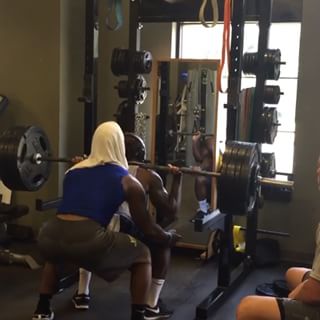
Football has always been ahead of the game when it come to strength and conditioning. They adapted it in the 1980’s under the legendary coach Boyd Eply at the University of Nebraska. Football athletes need to carry mass in order to take the pounding and at the same time they need to be as quick as possible. They need to take a large body and accelerate rapidly in a short amount of time.
While football set the standard other sports have slowly come along as well. It just took them a little longer. Sports like baseball, lacrosse, soccer, basketball, field hockey, ice hockey and many others now have combine type activities to measure levels of fitness in comparison to others in the same league.
So let’s get back to getting stronger. Speed is required for whatever sport you play. I can’t think of a sport where speed is a negative. However, for several sports body mass is a negative. You don’t often see 200 pound soccer players or lacrosse players. These field sports require more endurance and the large body mass will hurt that athlete on the playing field. But we still want them to get stronger. So the question becomes how do we get them stronger without adding mass and how much mass is an acceptable amount.
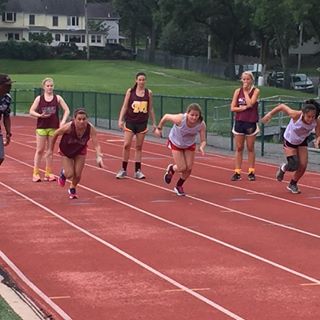
Now let’s get back to football and how they are ahead of everyone in strength and conditioning because they adopted it much earlier. There are a lot of strength and conditioning coaches that come from either a football background or a powerlifting background. That is why training needs to be sport specific and position specific. That is also why group classes or any gym that tries to to group athlete in large sections are missing the boat. Let’s take hockey for example. A defensemen might be able to carry a little more mass on his frame and does need to be adequately strong to take and dish out some hits. At the same time the forwards want to be as quick as possible and too much mass will count against them.
As a coach I know I can put 8-15 pounds on any athlete in a short amount time who has at least one year of training under their belt. I say one year of training because this program is going to require more advanced lifts such as squats and deadlifts. I have to make sure that the athlete is physically prepared to undertake such a program without risking injury. As long as I feel comfortable with that athlete alternating between high volumes of back squats and the other core lifts such as deadlifts, front squats, bench press, and pull-ups for maximum strength. 6 sets of 2 at about 80-85% seem to do the trick. Using this formula I can easily have an athlete put on that weight in 2 or 3 months.
So what about those previously mentioned field sport athletes who need to get stronger without putting on mass? Well there are two ways to do it in my experience:
The first is you can write long term programs into periodized blocks with an emphasis on an individual skill set for each block. For example if you have 8 months of training. You could do 8 periodized blocks where in two of those blocks you focus strictly on strength building. That leaves you with 6 blocks to dedicate to speed work, injury reduction, agility, power, and all the other qualities that are needed for that athlete. Two months out of an 8 month period will only serve to increase strength while reducing weight gain even if it is muscle gain. Overall mass whether it is muscle or fat will slow down the athlete as previously mentioned. Obviously muscle is the better of the two options. These two month long blocks will also serve as a metabolic boost which will increase the athlete’s testosterone levels and allow for lean tissue gains whereas if you had the athlete in a strength / hypertrophy program like I mentioned above for more than a few weeks you run the risk of slowing down the athlete and decreasing endurance capabilities.
The second way to do this is to get rid of the high volume days and instead focus your strength training on heavy weights as long as the athlete can handle it. Remember I recommend at least one year of training under their belt before attempting to go anywhere near a one rep max. The high volume days will serve as hypertrophy training which is what we don’t want. Remember we are looking for strength without size. So in scenario two we want to focus on speed training, deceleration, agility, injury reduction, power training, and strength all at once. On the strength days we want to be around 80% of a max and above for multiple sets of low reps. A good programs that I like is 6 sets of 2 @ 85% then on the last set do max reps. If you are able to get 5 reps you need to increase the weight.
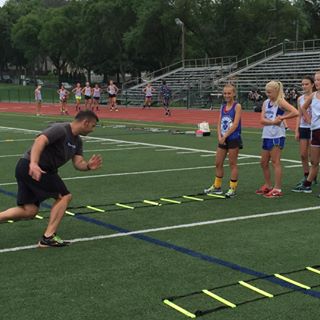
A lot of times when an athlete goes to the gym by themselves or they just enlist the help of a personal trainer who uses bodybuilding style training methods. That athlete will often neglect speed training and conditioning. Once you develop a tolerance it is easy to just go to the gym and lift weights and do nothing else. However, when that happens you fall into the same trap of putting on mass and thus slowing you down. That is why you need to look for a certified strength and conditioning specialist who can help you create the ideal program for you. Just because a trainer is jacked and looks like a bodybuilder doesn’t mean that their training style is right for you. Think back to the example of a soccer player. Do soccer players need to look like football linebackers. Of course not!
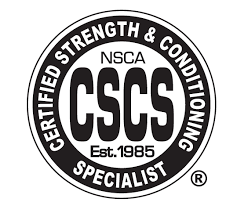
At inception sports performance we create programs based on the individual’s evaluation as well as their sport and their positions within that sport. To find out more go to www.MyOffSeason.org
5 Reasons I Like Training Guys Better Than Girls:
Guys are not afraid to “bulk up” With female athletes there is often a selling job that I have to give. “Lifting heavy weights will not make you bulky. In fact, if you are stronger you will become faster and leaner.” Even after explaining that there is a lot of give and take with female athletes. Guys generally don’t have a problem being told to get to the squat rack and lift heavy.
Guys usually have at least attempted to lift before coming to me. Even if their form is not great or they have no clue how to write a workout program if someone comes to me that has already been training for some time it makes my job easier. At that point we just need to tweak a few things and make some minor adjustments.
More guys think they have a chance at playing in college or professionally. Even though the percentages are stacked against them guys often grow up dreaming of playing basketball at Duke or playing football for the Giants. If they have that in them they also have it in them to work for it and do what is necessary.
Guys can survive on less.If I have a male client and all we have to work with is a giant rock, a large tire, and dirty kettlebell in a non air-conditioned hot and sweaty gym they generally will be fine with it. As long as they get results and there are no girls around.
Guys have the pure ability to throw around bigger weights.Sometimes it’s just fun to lift big weights. Enough said
5 Reasons I Like Training Girls Better Than Guys:
Girls don’t have egos about strength training. In my experience girls won’t put an extra 2.5 pound plate on the bar unless you tell them they are ready. Most girls come in and just assume that I am the expert and I will help them get better.
Girls tend to have better body control and mobility. In my experience guys often want to put the cart before the horse and lift big weights before they have the motor control or mobility to put themselves into proper biomechanical positions. When training young athletes there is always an initial learning curve where gains are made neurologically rather than actual strength gains. In my experience young females have better awareness of their body positions then young males. Females tend to have greater mobility of the thoracic, lumbar, and pelvic complex then their male counterparts. That alone means I can often start females on a true strength training programs where they can squat, hip hinge, or carry weight without worrying about potential injury. Whereas, with guys I often have to teach proper movement patterns before I feel comfortable loading them up with weight. Basically females have a shorter learning curve.
Girls don’t think they know everything because they saw a YouTube video. This relates to the ego thing but girls typically don’t try to bring in ideas from things they saw online. With males I often have to explain that generic trainers or fitness models online have never seen you move and they don’t know what sport you play or what your weaknesses are. I rarely have had to explain to a female why Just because Derrick Henry the All –American running back from Alabama squatted 500 pounds means you should too. Guys tend to want to get “ripped” but it I have to explain that not all positions in every sport needs to look like a bodybuilder.
Girls tend to be more thankful and appreciative. In my experience females tend to be more appreciative of someone teaching them new skills and helping them game plan for their athletic development. In our culture often everything is for the boys. Everybody thinks of football when they think of strength and conditioning. In schools football and basketball tend to get all of the resources. When a coach such as myself focuses my attention on making a female athlete better it can come as a shock so they are often more appreciative.
Girls will tell their friends.If a girl loves working out with me and sees results she will tell her friends to sign up too. In fact a girl might tell her whole team. Then before I know it I have a group of girls working out together instead of just the one. With guys if they love working out with me and see results they tell no one. Why would they give up that competitive advantage? They would rather just be better then everyone else and have everyone wondering how that happened.
The rise of boutique fitness classes and gym culture.
As a CSCS I am good at what I do which is prepare athletes for their sports. I know what progressions need to happen for youth athletes and I know what programs need to be implemented for older athletes. That doesn’t mean that I am not still learning and implemented new principles as situations arise. It also doesn’t mean that I am not open to new ideas and suggestions. As a fitness enthusiast I have run several marathons, half marathons, obstacle races, and the like. I have done kickboxing, yoga, and boot camp classes. I currently do CrossFit and enjoy it quite a bit. I love the fact that there are so many classes for fitness enthusiasts such as myself to choose from. However, as a strength and conditioning specialist all of these specialty classes that keep popping up create mixed messages for athletes. Sometimes the messages come from YouTube and social media where everybody is an expert. Sometimes the athlete’s parents go to a class and love it so they influence their children to attend. We happen to live in an area where there are lots of high process fitness optons. Things like Barre Mathod, Bari, Soul Cycle, CrossFit, SLT, OrangeTherory, Pilates, PowerFlow Yoga,, and the list goes on and on. I am not saying these are not great classes for general fitness. I am saying that they are not for athletes. Athletes need to train for a purpose with a specific goal in mind. Most often that goal is a combination of strength and/ or speed. Strength and Speed are the two most important factors in determining overall athleticism. At Inception not only will they get the program in place to help them reach their goals they will also get a program that reduces injuries. If an athlete is not on the field then nothing else matters and with the rise of year round sports injures happen at a higher and higher rate among youth athletes. There are things that can be implemented to help reduce that risk. I incorporate ACL tear reduction drills as part of my warm up for all my athletes. When baseball players come in I always work on arm care. The shoulder is such a complicated joint that you need to give it specific attention in order to reduce the chances of an injury. The one thing that the entire specialty classes have in common is they are group classes. When you have a group setting you automatically will not get the attention you need because everyone in the class is doing the same thing. It doesn’t matter if you are a baseball player, a soccer player, or someone coming off an injury. If you are an athlete it is in your best interest to find a qualified CSCS to work with to get better for your sport and not just rely on general fitness classes or personal trainers.
Spartan Race Super Mountain Creek, NJ
I just ran the Spartan race super at Mountain Creek in Vernon, NJ and it was every bit the challenge I was expecting and more, I am not sure what I was expecting considering it is a race on a ski slope called MOUNTAIN Creek but I have to admit there were times I thought it was too difficult. But at the end it was exactly the physical challenge I wanted and often need to prove my fitness level.
The race was very well run. When I got o Mountain Creek I had no problem finding parking and there were plenty of buses to take me immediately to the starting area. If I do have one complaint it is that I it was so well organized that I didn’t need to be there an hour and a half before my race time like the website suggested. After getting there I checked my bag, which was 10 dollars and enjoyed the atmosphere while the opening climb just past the starting line taunted me. There was plenty of water for the racers and bathrooms as well. The area was very muddy but I suppose that can’t be helped because of the downpour the day before. During the race there were plenty of people guiding you where to go and sometimes how to complete an obstacle. I maybe could have used a few more water stops but there were at least 4 on the course. When the race ended it was a smooth finish when I got my medal, my t shirt, and of course my free beer and then was directed to the hoses to hose myself off from all the mud and filth I had gathered on the course. At the festival areas there were cool spots to take pictures, plenty of reasonably prices Spartan race apparel, and food and rink to go around. It was the easiest and stress free obstacle race I have done from an organizational standpoint.
The race itself was anything but easy and stress free. But before I get into the course itself let’s talk about my preparation. I signed up for this race probably about 6 months ago. I always like to do a fall race because it allows me the summer to train. Then a few months after signing up I kind of forgot about it. The friends and co-workers who were thinking of doing it with me bailed out one by one so I kind of put it on the backburner. Not to say that I was out of shape. I just didn’t directly train for a Spartan race. Although looking back now I am not sure anyone can train to conquer the terrain that Mountain Creek provided. I decided my summer was going to be spent following Jim Wendler’s 5-3-1 program plus doing CrossFit a few times a week. t did increase my squat by 15 pounds, my deadlift by 25 pounds. and my bench by 10 pounds. That is quite a lofty workout regimen but doing a max squat or deadlift doesn’t exactly help me climb a rope or scale a wall. I like to think I am always in pretty good shape. In fact, the last two challenged I have done I didn’t really train for. Last October I ran a half marathon with zero to no training. The Spartan race if you don’t know is a 8.8 mile trek through rough terrain with obstacles along the way. The ideal Spartan racer is probably lean, quick, and able to cover ground quickly but also is very strong particularly in his or her upper body compared to their body weight. Think Ninja Warrior with much better cardio. Pretty much all my weak spots when I do CrossFit. I am a heavier guy who struggles with the rope climbs, pull-ups, muscle ups, and things like that. But, as I preach to my athletes you can’t just accept the challenges that you are good at. You have to be able to attack and conquer your weaknesses as well. So I went for it.
The race itself was very challenging particularly the hills and the rough terrain. The very beginning of the race there was a hype guy who got us all pumped up and we ran through smoke to start the race and I ran about halfway up this giant mountain then it hit. The walking begins. The run turned into more of a hike. The fact that it poured the day before probably didn’t help. To be honest there wasn’t that much running throughout which kept the race quite slow. The uphills were too daunting to run and the downhills were just as steep with rocks and mud that you couldn’t really run those either. There was one long section of some good trail running which was challenging but manageable and that was actually quite fun. I haven’t trail run in a while but it reminded me of Lewis Morris Park in Morristown where I used to trail run all the time. It was up and down with rocks and tree roots Trail running has a totally different style than road running. You can never zone out or you might find yourself face first in a pile of mud and rocks. There were probably 5 severe climbs where running was not an option except for the elite’s I suppose. Let’s put it this way, I didn’t see anyone running around me. The obstacles themselves were challenging in their own right. Some of them I surprised myself with how well I did it. The traverse rope I have never done before so being able to do that with no problem was a lot of fun. I went for the supine approach. Then there was the typical scaling of different sized walls. Some were harder than others. On one of the bigger walls a fellow Spartan helped me get over by letting me use his knee to get a boost. Being only 5’9 and my shoes and socks weighed down with mud and water didn’t allow me to get the vertical enough to get up and over the large wall. There were several mud pits culminating in one where you had to go under a wall underneath the mud which of course they had a photographer waiting as you popped up on the under side. Smile!
There were carrying challenges as well. The atlas stone carry was a fun one where you had to pick up an 80 pound atlas stone covered in mud then carry it about 15 yards. Do 5 burpees and repeat. The Log carry was similar but more challenging. I noticed some of the logs had holes cut out for grips and some did not. Of course mine did not. Mine was also a lot thicker rather than longer which didn’t allow me to put it on my shoulder like some other people did. It wouldn’t fit. I had to carry this heavy ass log in front of me fatiguing my biceps the whole time. Of course right after the log carry was the sandbag pulley. Those two directly after each other was cruel and unusual punishment. I attempting the pulley but with the combination of my hands being wet, my grip and biceps being shot I couldn’t quite get it up. I teamed with another Spartan who as a team we were able to get the sandbag all the way up and down. Thank God Spartans stick together. The two consecutive obstacles right after each other seemed to be a theme for this course because another extremely challenging set happened earlier ion the race. The first was the stone carry. Basically you had to fill up a large bucket with stones. Had to be above the holes punched on the top inch of the box they said. Then you had to carry the bucket up a large hill and turn around. This was extremely difficult. I was forced to put the bucket down several times.
At the bottom of the hill you dumped the bucket out back into the pile with your forearms and hands throbbing they sent you right to the vertical rope climb. Not only were my hands dying and my arms shot but now we immediately had to jump into waist deep water and climb a rope. I can do a rope climb no problem. This rope even had knots in it which made it much easier. But again the course got me here. Jumping out of water to climb a wet rope was just too much. I actually got about halfway up but just couldn’t go any further. If I had sat there for 10 minutes or so I could have gotten it but I didn’t want to hold everyone up who was waiting behind me. So I jumped out of the water, did my 30 burpees and moved on. Just when I thought it was time for a little running to give my hands a rest next up was the true Ninja Warrior special. Climbing horizontal on a wall with little sections for your hands and feet. Think rock climbing wall but instead of moving up you are moving sideways. I took about 4 falls on this one but since there weren’t a lot of people behind me I eventually got it. I was pretty pumped because I surprised myself on this one. Once that was over my hands felt like curled up balls on knotted muscle.
There was one more obstacle again where I surprised myself. It was a large up and over wall. The bottom section was a flat wall then above that there were horizontal beams. I knew I could get up and over the beams but the wall was high and at this point I wasn’t sure I had the energy or the grip strength to get up there. I sat for about 2 minutes watching others then finally made my jump and on the first try got up and over. I was pumped about that one. That’s why these races are so much fun because you get challenged and end up doing things you didn’t think you could. There were a lot more obstacles and stumbles along the way. Of the 25 obstacles I was unable to do 4 of them and on two others I got help from another Spartan. The 30 burpee penalty for each failed attempt was not fun but sometimes saved me time. The last major uphill then down was soul crushing. It ended basically where the ski lift drops off skiers. This ended up with the best view of the course. I actually stopped for a second partly because I sucking wind but also because I wanted to take in the view from the highest part on the course and enjoy it for a second. That last downhill was brutal. It was a decent of loose rocks and gravel, which made my quads burn like never before. I saw several people wipe out and one man actually just take a seat. After all that there was only about 50 yards on crawling under barbed wire on mud and more rocks down another hill to get to the finish. Of course there was the last obstacle of the hanging rings, which I got two rings deep and had to bail out. 30 burpees later I was able to jump over the fire logs and pose for my picture as best I could and it was over.
The course took me 4 hours and twelve minutes. If you had told me before it started that the 8.8 mile Spartan race would take more almost 20 minutes longer than it took me to run the New York City Marathon I would never have believed it. I might not have taken on the challenge. However, sometimes that’s where greatness lies, going into all challenges blindly and dealing with the next obstacle in front you one at a time until you are finished. Would I do it again? I don’t think I would attempt it again without training specifically for it. I feel like I could do the sprint but as I sit here two days later with my entire body still sore I wouldn’t say I would attempt it again in such a manner. Is this my last Spartan Race? Absolutely not! I now have a base of knowledge and know what it takes. I have a time to beat and a goal for next time. I will be back! Arooo!
Strength and Conditioning Thoughts
Olympic lifts are a highly technical movement and a lot of athletes use them to develop power We know that Olympic lifting develops that power in a vertical plane but are they really the end all be all for power development for athletes? I can find you a lot of really good athletes who are division one athletes and even professional athletes who either have never done Olympic lifting like hang cleans or snatches or they’re not very good at them. There are 6’8″ basketball players at the University of Kentucky who if you watch them do a hang clean it looks really ugly. At the same time you take a 5’9″ compact kid who played Division III football and he’s placing in the CrossFit games and competing in Olympic competitions. The second guy is a really good weightlifter the first guy is a really good athlete. So what does that tell us? That tells us that Olympic lifting and power development is a means to an end for athletes and not the ends to the mean. Olympic weightlifters who compete that is the end product. Someone who plays basketball, football, soccer, or baseball yes we want to get them more powerful but are we going to sacrifice important time in the gym to teach the highly technical skills that the Olympic lifts require. Some coaches will tell you that completing an Olympic lift is not that important for an athlete. So what are we trying to get out of our Olympic lifts? We’re trying to get to that triple extension position of the ankles knees and hips. So that being said all we really have to do is get to that High pull where the bar reaches your sternum before dropping under the bar. The catch is not as important to me when I’m working with athletes. If an athlete can complete the clean yes that’s great! We’re going to work on that but if they’re not there yet I’m not going to spend weeks or months working in the catch. When they get to the triple extension position that’s enough for most athletes. Don’t get me wrong I am not advocating bad form. I will still stress back tight, hamstrings engaged, straight bar path and all the things that are required in a good Olympic lift. I have just found that the drop under the bar and the catch are the most difficult for a lot of people so I will not spend weeks and months drilling technique. There is some benefit in completing the Olympic lift mostly in deceleration and controlling the bar as it comes down to and you drop under it but it’s not nearly as important as that triple extension position. I would say 90% of the work is done once you get that bar up to about your sternum as far as an athlete is concerned. Remember this is a means to an end. We are training football players, basketball players, soccer players baseball players. We’re not training Olympic lifters so if their technique is not 100% spot on as long they’re not going to hurt themselves and they are getting power development that is all we want. Strength coaches don’t always want to hear this but our best athletes in the gym are often not our best athletes on the field. Our job is not to create the best workout warrior but to aid the athletic process and keep the athlete on the field.
When training an athlete we try to develop the complete athlete so we work on speed. we work on injury prevention. we work on stabilization, we work on mobilization. All of these things are important factors so do we have that much time to really go over fine-tuning the clean and power clean positions? Probably not. There’s a lot more better use of our time. So we create programs for the athlete keeping that in mind. Remember a means to an end and not the other way around. Olympic lifts are important and we do use them but as a part of the whole overall program.
When you’re working with mostly high school and college kids their schedules are really tight. High School kids have practice they have homework they go to school all day. You don’t have a lot of time so what gives you the most bang for your buck? When working with college kids the NCAA restricts hours that the strength coach can put in with the kids so that becomes an issue as well if you are working in the university setting. A factor in a private setting is money. Athletes pay per session so they’re not going to come in five days a week most of the time. They’re playing in the off-season and playing in the summer so if they’re playing games two or three times a week plus they go to practice then they have to show up for the weight room there probably only with you two times or three times a week maybe four depending on the time time of year. Keeping that in mind we don’t have time to develop the weight room skills. The more important skill work has to be done within their sport working on becoming a better baseball player, fine tuning their swing and things like that. I would rather put a kid through a one hour hard workout where the kid works really hard then sit there and have them work on skills of a hang clean. It is just more effective because you have so little time and you really have to give them a good work out that’s going to number one keep them injury free and number two improve performance.
I’ve seen trainers that can dissect anatomy, they can tell you what energy systems are being used, and they can write a program that looks like a work of art. I’ve also seen other trainers who don’t have an exercise science degree really can’t tell you why they’re doing something but their athletes keep coming back because they feel motivated, they feel inspired, they get a good workout, and they know that what they’re doing is working. Sometimes coaches can really outsmart themselves they try to be too precise they try to get every athlete to be a carbon copy mold of the ideal standard. The reality is there is no ideal standard. Every athlete moves differently every athlete has different body types, different injuries, different pasts that are going to affect their movement patterns.
I try to learn every day. This field is always changing. As a coach if you stop learning then you are doing yourself and your athletes a disservice. Sometimes I look at my programs and wonder what was I thinking but then I remember when all else fails give the athlete a tough workout and motivate them and they’ll come back for more.
Joe Lopez CSCS
Strength Coaches vs. Personal Trainers
I have been in both industries. I have worked with clients whose goals were to look good, lose weight, drop body fat and I have also worked with athletes looking for performance on the field. I can honestly say that I feel like strength coaches can venture into the personal training world a lot easier than personal trainers can work as strength coaches. I feel like it is a totally different work environment. Strength coaches have a lot more to focus on. They have to make sure they periodize properly as well as provide adequate recovery. They also have to think about which exercise that particular athlete should not do based on his or her sport or body type. They also have to think about what position the athlete plays within a sport. A Football lineman is going to train a lot differently than a wide receiver. So experience, education, and science play a large part in what a strength coach does. While being a personal trainer has it’s own unique set of demands as well. I have worked with a lot of clients with mobility issues. These issues force you to be part physical therapist before you can begin a weight loss or a fat loss program. When you get someone who is not in very good shape the reality is anything they do will work in the beginning. It is after that initial plate where the hard stuff begins. Each field does have it’s own unique set of demands however, I feel that if you can train athletes you can also train general fitness. In fact, I often used athletic protocols with my general fitness people and they saw great results.
In the past I have written about the dirty little secret of the fitness industry. https://jerseystrong.wordpress.com/2012/01/14/why-certifications-matter/ There are so many different “certifications” out there. Some are take home that you can send in and as long as you pay the money you are a certified personal trainer. The industry is filled with personal trainers who don’t know and don’t use one shred of scientific evidence in their programming. Another thing to be aware of is trainers who are more focused on being celebrity trainers than trainers who are celebrities. Obviously we have to be market ourselves and drive business but as Martin Rooney said when I met him last year. “The moment my career changed was when I realized that I was training athletes and that I wasn’t the athlete.” If your trainer is more focused on his or her own success than yours you should get a new trainer.
As a strength coach I read everything and anything on the subject. I attend conferences and clinics. Not only do I read what my colleagues put on Twitter and their own personal blogs but as a member of the National Strength and Conditioning Association I read the journals every month. Yes people there are scientific published journals from actual research that we as strength coaches are supposed to use in our programming. Now, some of what we do is art and not science and some is based on things like the athlete’s training age and even the space and equipment available. That being said, if your trainer is not keeping up with up educating themselves then they are doing you a disservice.
Another difference between a personal trainer and a strength coach is the ideal body that the client is after. As a personal trainer everyone who stepped in my door said the same things. I want to lose weight. I want to drop body fat. I want to get ripped. Or for the ladies I want to get toned and not be too big. (More on how much I hate that later) There is no such thing as toned ladies. For the athlete the body ideal is often very different. For one it depends on what sport and what position your play. To go back to the same example I gave before a Lineman in football will have a very different body type than a wide receiver. A lineman might aspire to become as strong as possible and not care about storing body fat as long as he can still move quickly. The wide receiver on the other hand will need to focus on top speed, acceleration, and the ability to jump to get a ball at its highest point. I have never once talked to my athletes about defined abs or quad separation. If you as an athlete go to a trainer who is focused on any of those things walk away immediately. Athletes are not bodybuilders. An athlete should never aspire to be shredded. Instead, the programing should be focused on performance only. Often with this approach the athlete will get the body he or she wants or more importantly needs for their sport.
Of course I am a little biased but I believe that the National Strength and Conditioning Association is the cream of the crop when it comes to strength and conditioning and personal training. The CSCS is the certification standard in the NCAA. You will not find a college strength and conditioning coach without one. Also, there is the NSCA-CPT for general fitness population which is also a great choice. Go to NSCA.com to find a qualified coach in your area.




